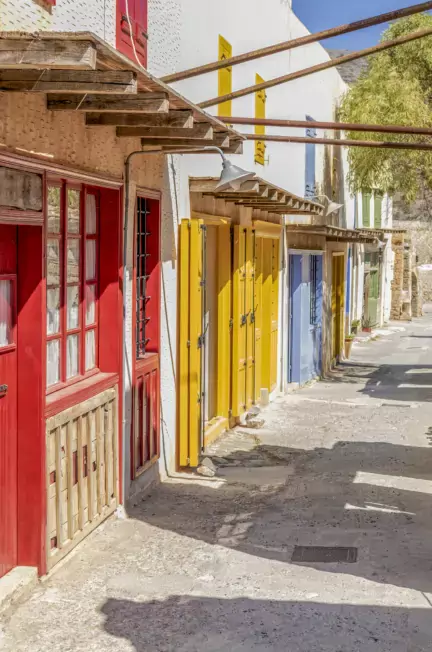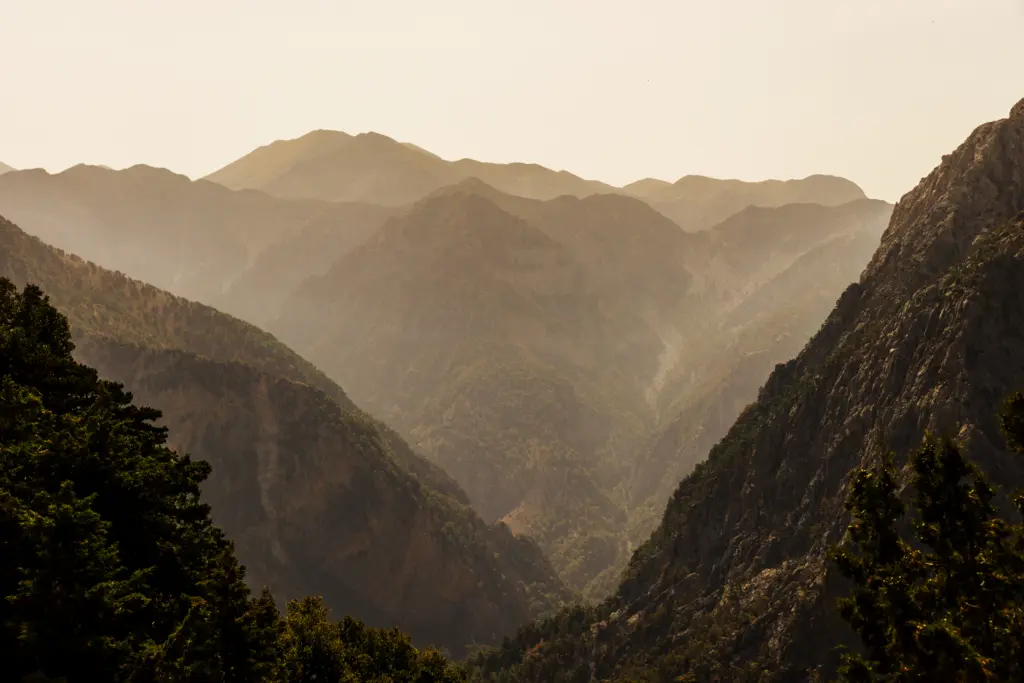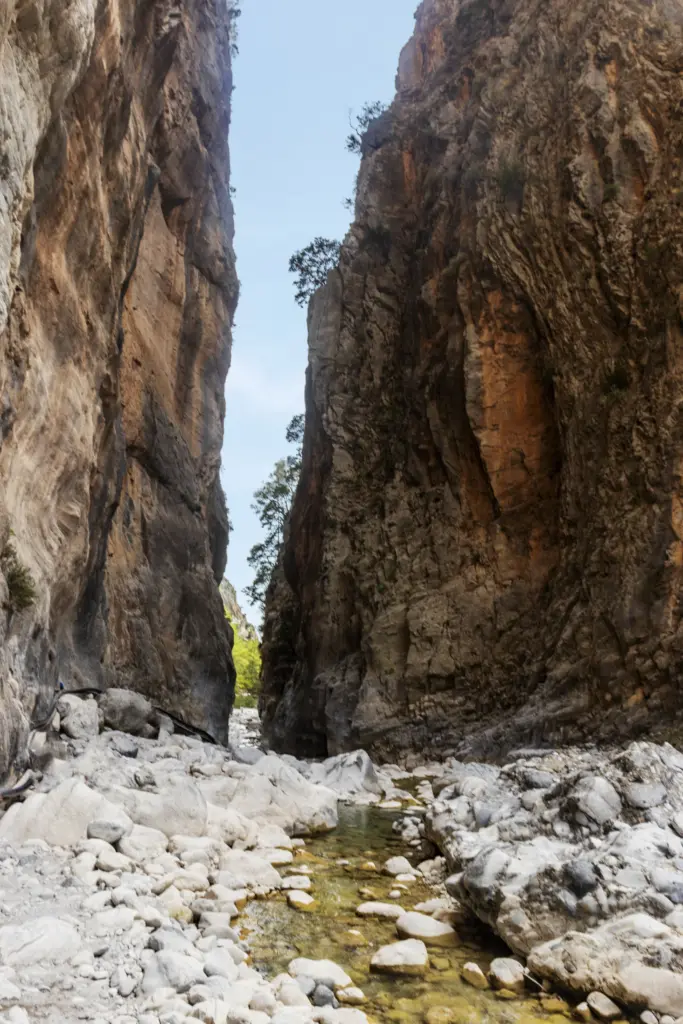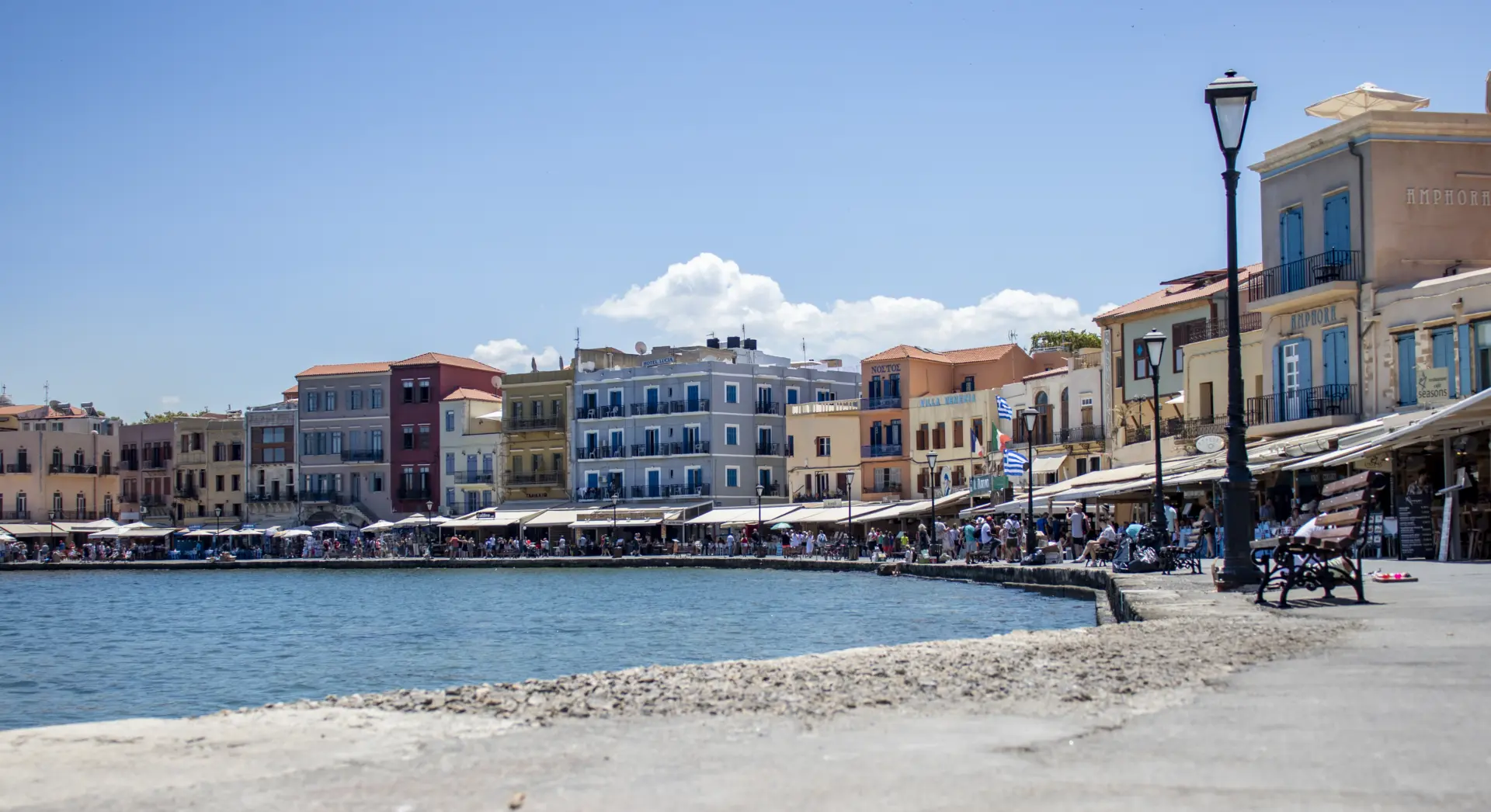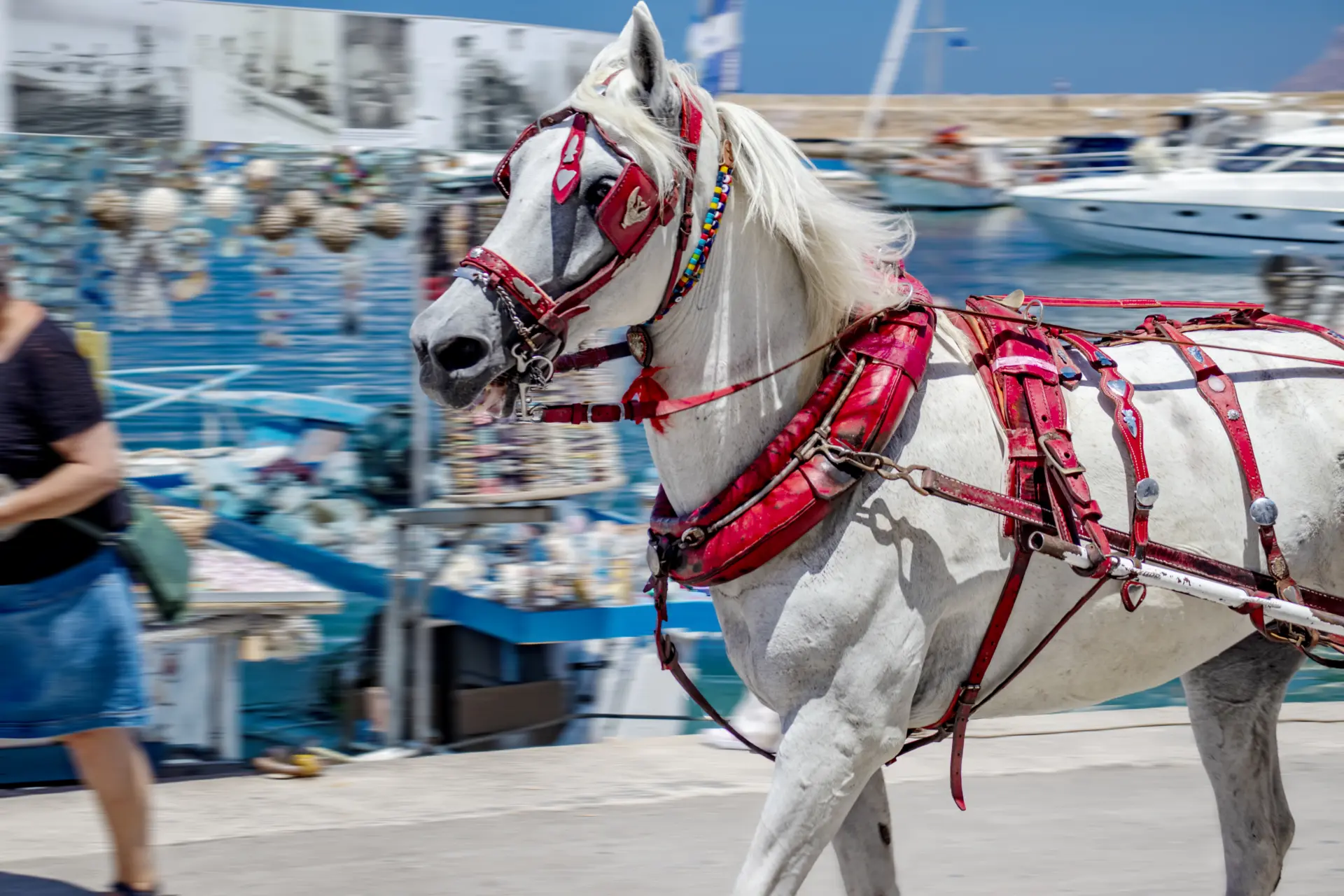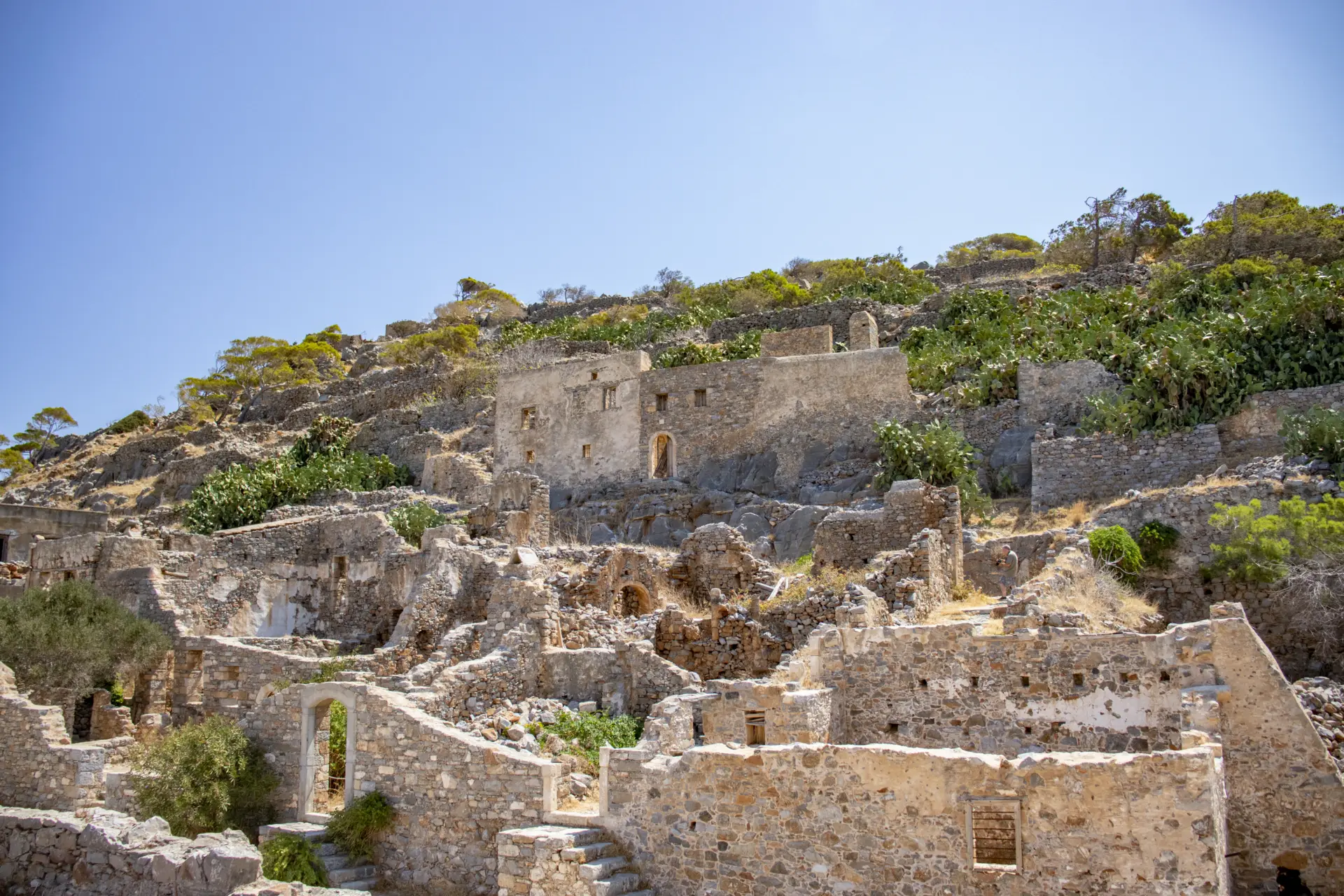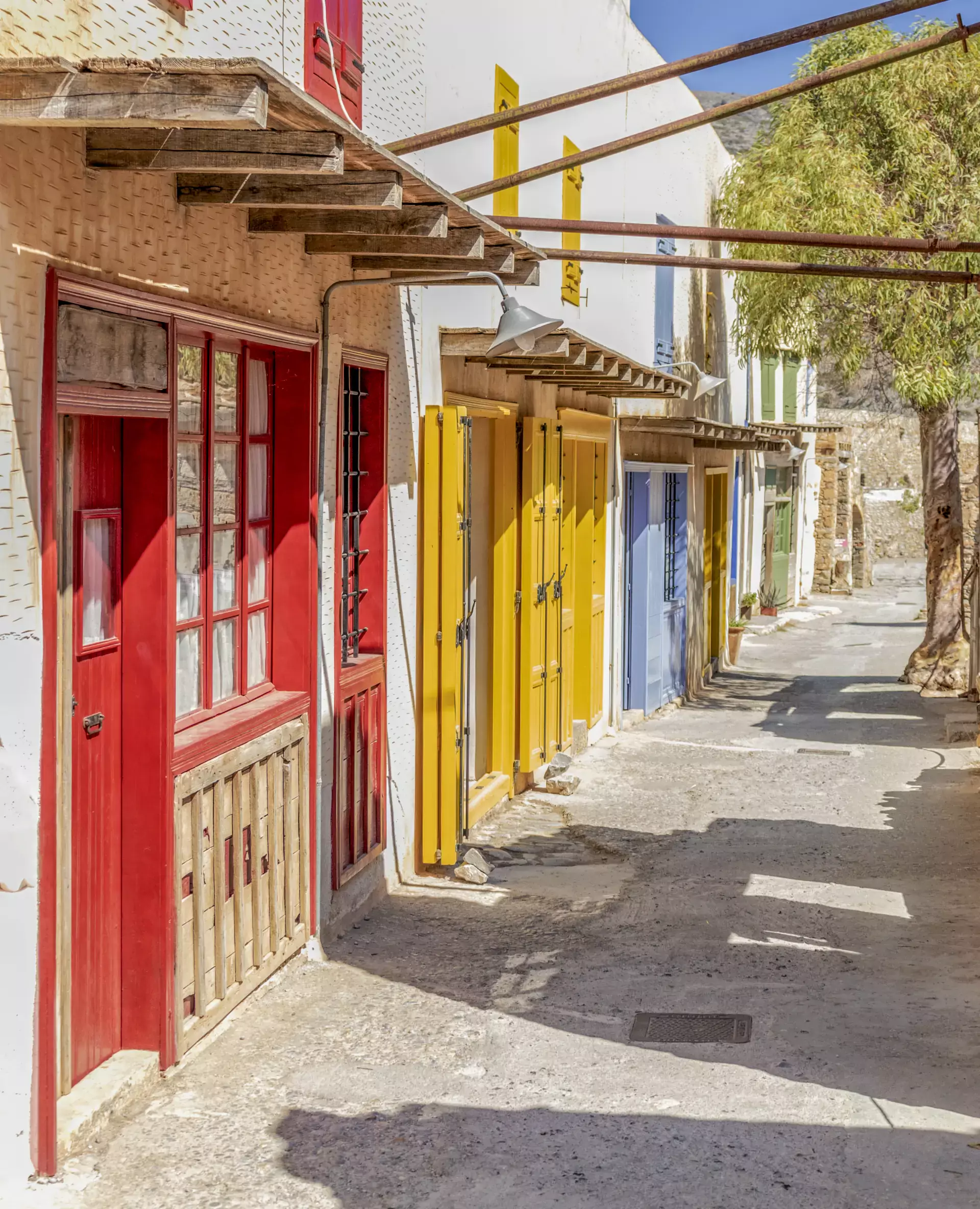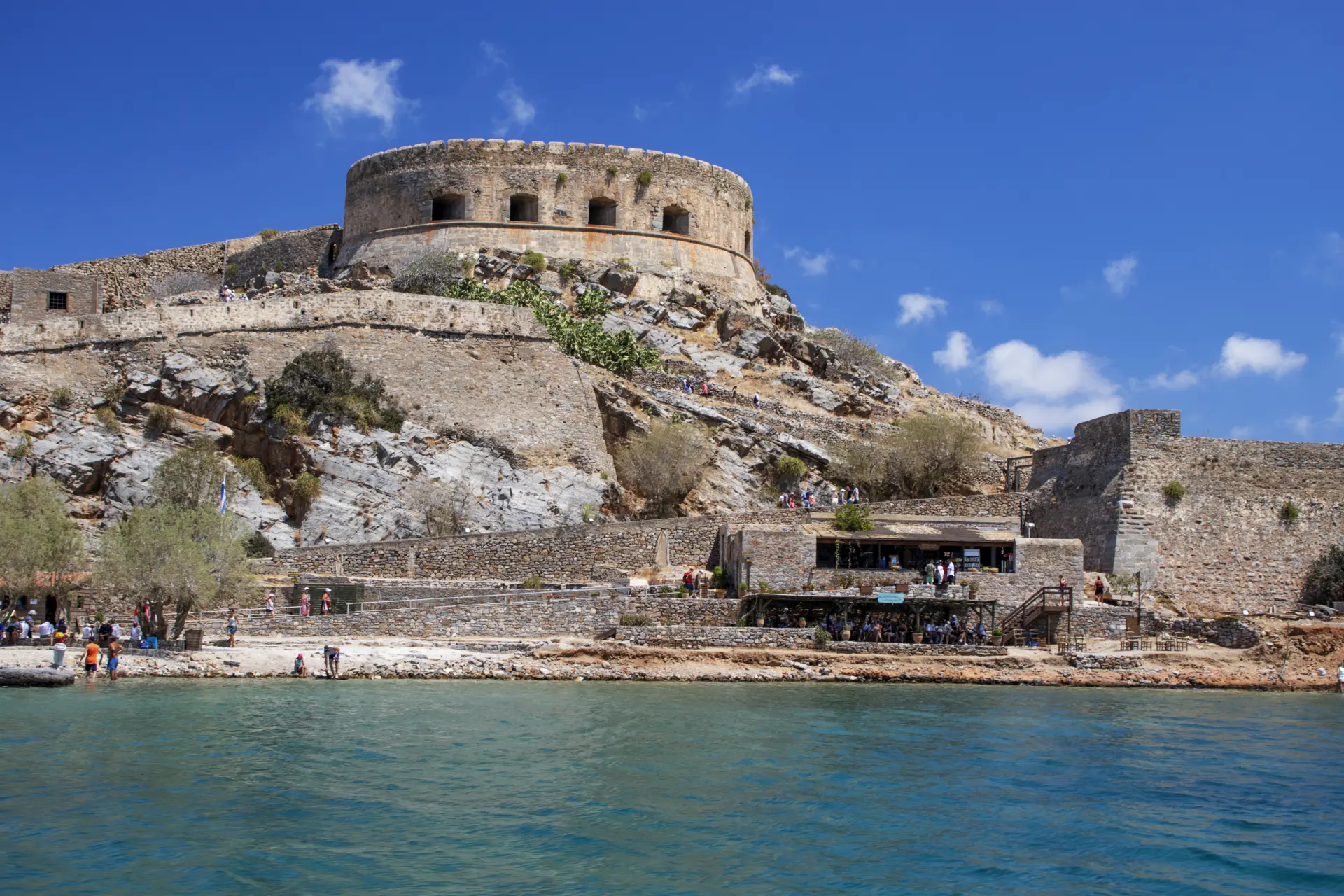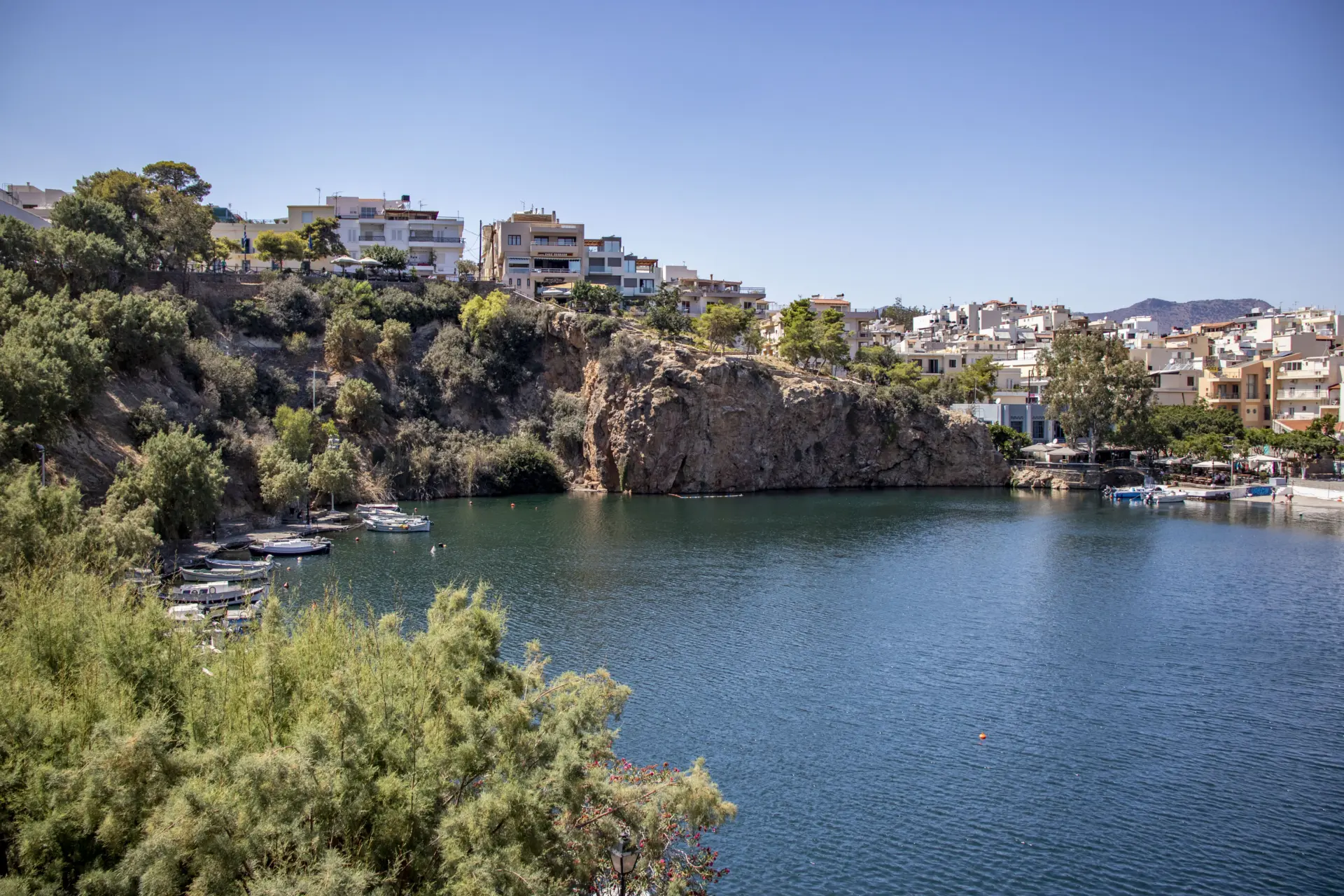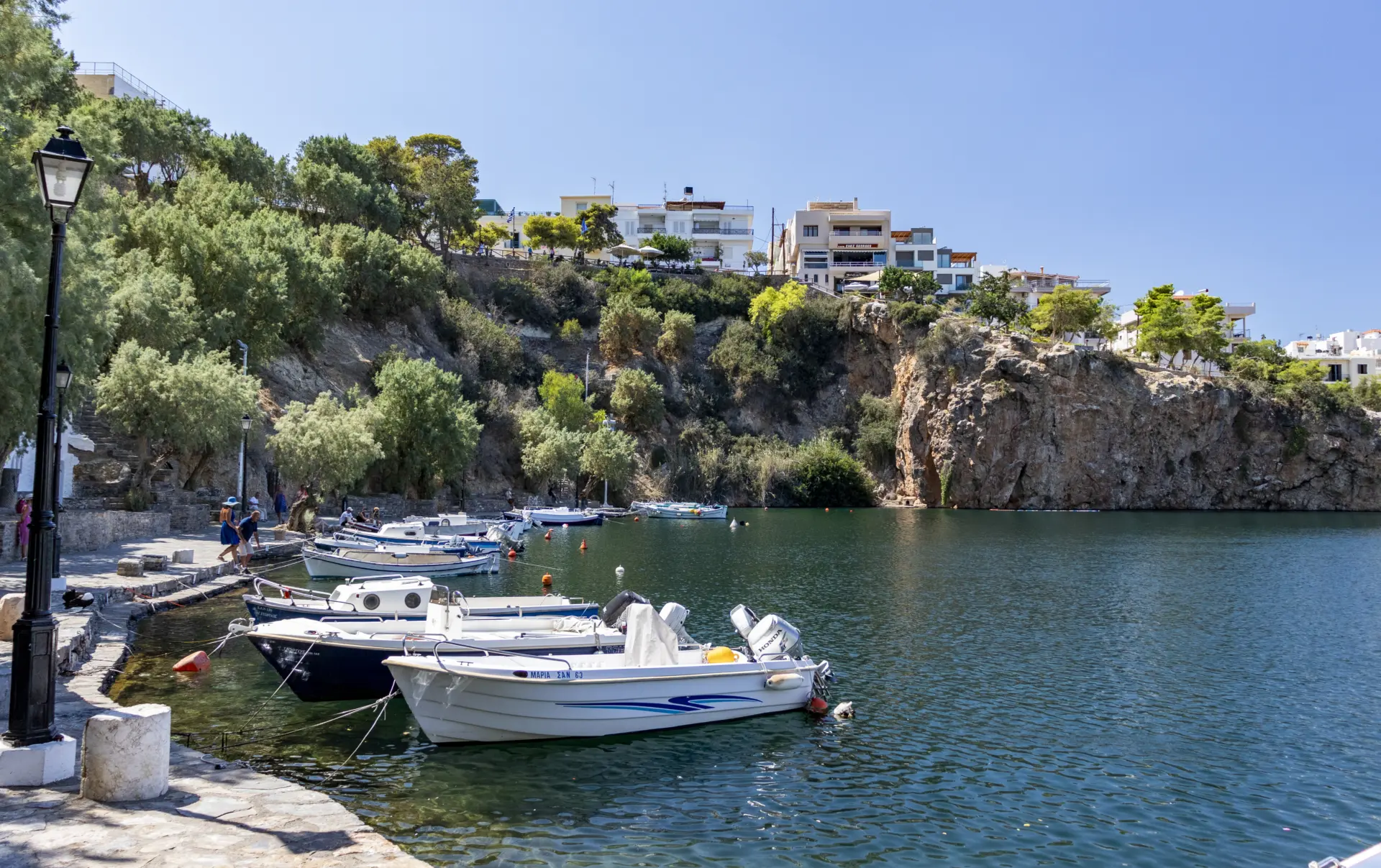It is not surprising that Crete, the biggest island of Greece, is also one of the most popular. The island is among many mostly known for its Chersonissos party life, but it has much more to offer. It truly is a versatile destination filled with nature, culture and history. Want to know more about the things to do in Crete? In this post, I’ll show you 14 amazing things to see and do in Crete so that you won’t miss a single thing during your visit!
*this post contains affiliate links*
- 14 Amazing Things to See and Do in Crete
- Hike the Samaria Gorge
- Visit Chania
- Go swimming at Lake Kournas
- Visit a former Leper community: Spinalonga
- Spend a day at Elafonissi Beach
- Visit Agios Nikolaos
- Spend a day at Balos Lagoon
- Explore Minoan history at Knossos
- Roam around Rethymno Old Town
- Spend the day at Falassarna Beach
- Have a fun day at a waterpark
- Seek adventure at Portela Gorge
- Explore the Lasithi Plateau
- Spend the day at Vai Beach
14 Amazing Things to See and Do in Crete
Hike the Samaria Gorge
Let’s start off with what I consider the highlight of Crete: The Samaria Gorge. The Samaria Gorge is a 16km long hike through the gorge that is located inside Samaria National Park, A UNESCO Biosphere Reserve. The hike takes you past wonderful viewpoints, the ‘Gates’, which is the smallest part of the gorge (4 metres), and up close to the river.
The hike itself is considered medium difficulty. You start at an altitude of 1250 metres and apart from the initial steep descent, there are no notable height differences. It does get pretty hot at the bottom of the gorge and sometimes there is little shade, so make sure you start early. The park opens at 7 am and the last admission is at 1 pm.
The gorge ends at the foot of the White Mountains in the village of Agia Roumeli. Agia Roumeli does not have a road connection, but a ferry connects it to the rest of civilization. The last 3 kilometres to the village can be skipped by taking a public bus.
Most people only do the hike one way, then they take the ferry back to Sougia. From there public buses bring passengers back to the entrance. The last ferry departs at 6:30 pm, so do keep that in mind if you don’t want to get stuck. On average the hike takes about 5 to 5 and a half hours.
Tips for visiting the Samaria Gorge
- Bring loads of water. There are plenty of springs along the way, but at the end of summer they may have dried up and when I was there, there were loads of wasps swarming around the water. I can confirm that they won’t do anything because I literally stuck my hand between them to get water, but you might want to know that if you’re scared of wasps. They’re just as desperate for water as you are.
- Put on sturdy shoes. Especially the descent at the beginning of the hike is very rocky, so wear shoes with sturdy soles because that will make the descent a lot easier.
- Don’t forget a hat or cap. Depending on your starting time, there might be areas with little to no shade. Save yourself from the scorching sun by wearing a hat or cap.
- Bring your swimsuit! The hike ends in Agia Roumeli, a beach village. I can ensure you nothing feels better than ending the hike in the refreshing water of tea. I felt reborn afterwards!
- Don’t drink from the gorge. Some sources state that you can drink from the gorge. This is somewhat true because the gorge does provide the island with water, but take a good look around. People put their feet and hands in the water to cool down. You do not want to drink that.
- Alert the park rangers if something goes wrong. Throughout the gorge, there are park rangers stationed with donkeys. These ‘first-aid donkeys’ are your only hope of getting you out of the gorge in case something goes wrong. Helicopters and ambulances cannot reach the trail, but in all honesty, a first-aid donkey is way cooler right?
How much does it cost?
Entrance fee: €5,00
Boat to Sougia: €15,00
Bus to the start of the trail: €4.80
You can opt to book an excursion so you won’t have to book everything yourself. Here are some I’d recommend:
Visit Chania
Chania is Crete’s second-largest city which is located in the north and is mostly known for its old town. To this day, it is notable that the city has been conquered by many before; the Venetian architecture does not exclude Turkish Baths, Cathedrals and Mosques. It is a delight to stroll around the narrow streets.
Make sure to roam around the Venetian Port as well. Although the restaurants lining the port are open daily, I’d recommend going for dinner over lunch. Who doesn’t want to enjoy their meal whilst the sun is slowly setting, changing the entire atmosphere of the port into something even better?
Other things to see in Chania are:
- Visit Topanas, the Catholic part of town that has colourful cobblestoned alleys and exclusive boutique hotels.
- Wander around the Jewish Quarter with the Mosque of the Janissaries.
- Enjoy the less authentic atmosphere in the Turkish Quarter.
- Walk up to the lighthouse.
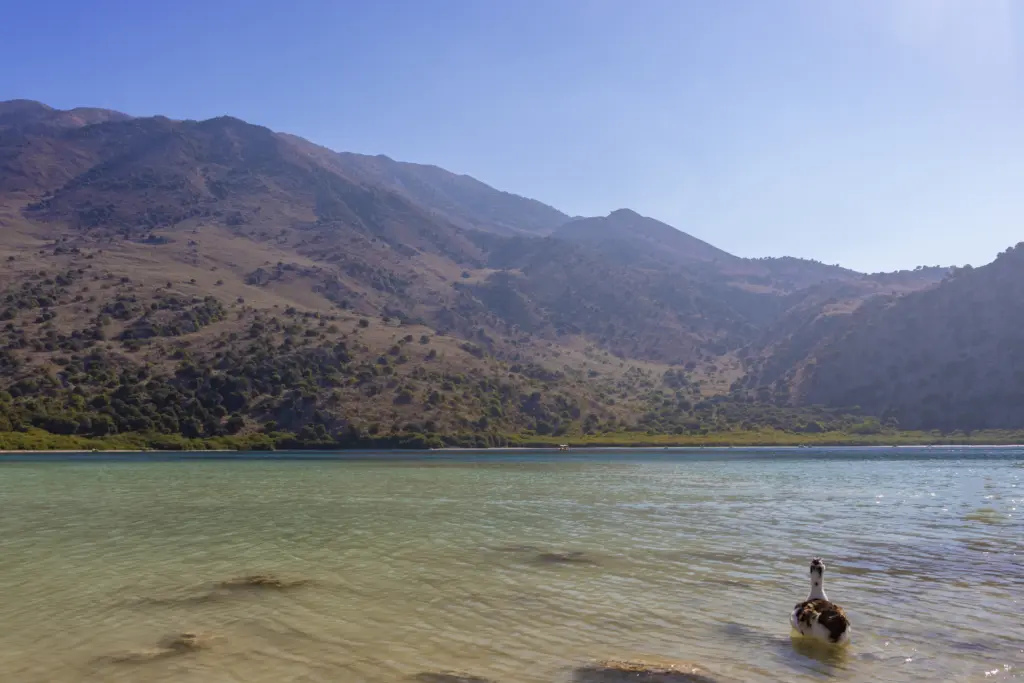
Go swimming at Lake Kournas
Just a 48-minute car drive away from Chania is Lake Kournas, the only freshwater lake on the island. Its emerald green invites you to swim, but that is not all the lake has to offer. There are plenty of activities to choose from such as renting a pedal boat or a canoe, or you could enjoy a cold refreshment at one of the tavernas. Wildlife fans can enjoy an afternoon of spotting as many wild animals as possible such as moorhens, ducks, geese, herons, cormorants, eels, water snakes, goldfish and turtles.
The lake is free to visit, there even is free parking (head to ‘Myth of the Lake Free Parking’ on Google Maps, the other parking is paid).
Visit a former Leper community: Spinalonga
Spinalonga is an island in the north of Crete, next to the town of Plaka. The eye-catching fort built in 1578 by the Venetians, is visible from the coast of Crete. The fort however is not all that attracts many tourists to the island yearly. It’s its gruesome history.
From 1903 to 1957 the island was used as a Leper colony (an isolated community for people suffering from highly contagious leprosy). On Spinalonga, the people would receive food, water, medical attention, and social security payments, although this became a lot harder to provide once Greece got involved in several wars. Fortunately, in 1929, the advocacy of the Cretan Anti-Leprosy Association helped improve the conditions; like a small sparkling star in a sea of darkness. Life on the island got better, theatres, cinemas and schools were established but that did not cure the illness. There was a reason the island got nicknamed the Island of the living dead. Life on Spinalonga was tough as leprosy was not kind.
Once the first effective treatment arrived in the 1940s, the number of inhabitants on Spinalonga started to decline. As soon as the leper community was completely dissolved, the island remained uninhabited as it is today.
The island received its popularity through pop culture. From documentaries to short stories and television series. To name a few:
- L’Ordre by Jean-Daniel Pollet, is a documentary about the leper colony’s leader Raimondakis.
- Who Pays the Ferrymen? (British Television series)
- Last Words (short film)
- The Island by Victoria Hislop (a novel whose setting is based on Spinalonga)
- To Nisi (television series of Hislop’s novel)
- Spinalonga by John Ware (short horror story)
Want to see the island for yourself? You can! There are plenty of boat tours departing from Plaka, Elounda, and Agios Nikolaos on a daily basis. Here are some of my favourites:
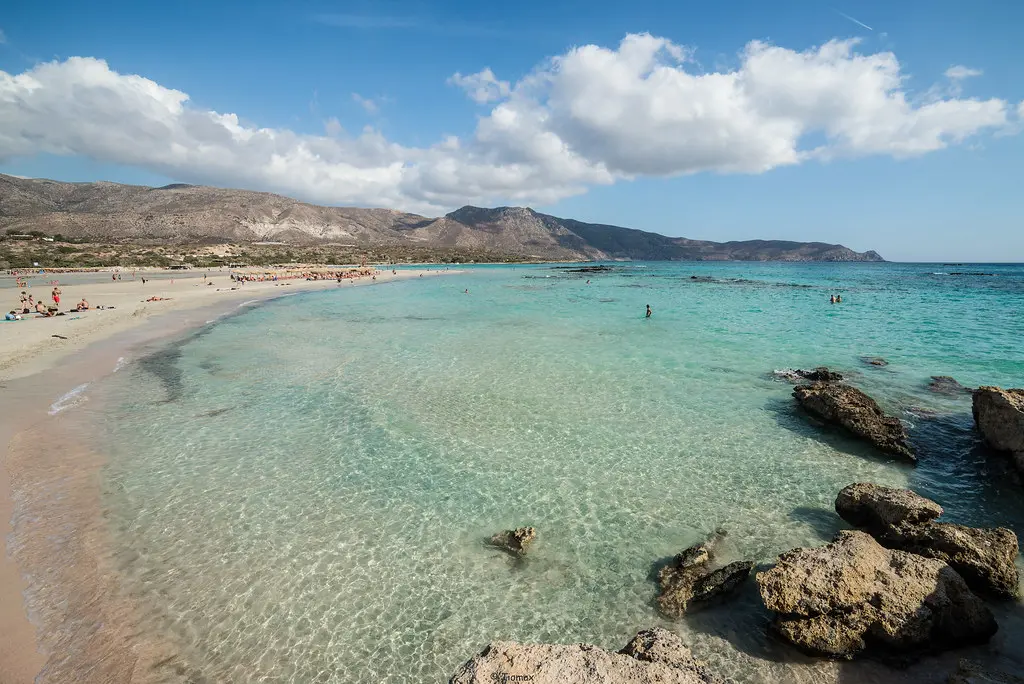
Spend a day at Elafonissi Beach
Elafonissi Beach is one of Crete’s most beautiful beaches. It’s located in the south-west of Crete across the peninsula Elafonisi (with 1 ‘s’). The beach has come to life straight from a picturesque postcard: get ready to sunbathe on tropical white sand and swim in crystal clear water. You can see the tiny fish make way as you enter the water. The beach is perfect for families due to the shallow water.
But that is not all…
If you’re lucky you might spot some pink areas. Elafonissi Beach is known for its pink ‘sand’. In reality, it isn’t sand that gives it the pink hue, but it’s microscopic pink shellfish mixed with the white sand. Whether you get to see the pink beach depends on multiple factors: the tide, the wind, the temperature and above all what the shellfish have eaten.
There are sunbeds, beach umbrellas, two small beach bars, toilets, and you can even rent a kitesurfing kit.
Even without seeing the famous pink beach, it is still a gorgeous place to spend the day!
Visit Agios Nikolaos
Agios Nikolaos, located in the east of Crete is the capital of the Lasithi Region. Although it’s not very big, there are plenty of things to do for a filled afternoon, and that is exactly what makes it perfectly combinable with Spinalonga or a visit to the beach.
Right in the heart of the city is a lake called Lake Voulismeni. This lake is rather special because its sweet water is connected to the saltwater of the sea. Legend says this is the place where Athena and Artemis would bathe. Nowadays you can enjoy a walk around the lake, look at the boats floating in the water or have a drink at one of the cafes.
There are also several museums you could visit, for example, the Archaeological Museum of Agios Nikolaos or The Folk Art Museum of Agios Nikolaos.
Those who would rather spend the day shopping should head to 28th October St. This pedestrian street is the place to be for souvenirs.
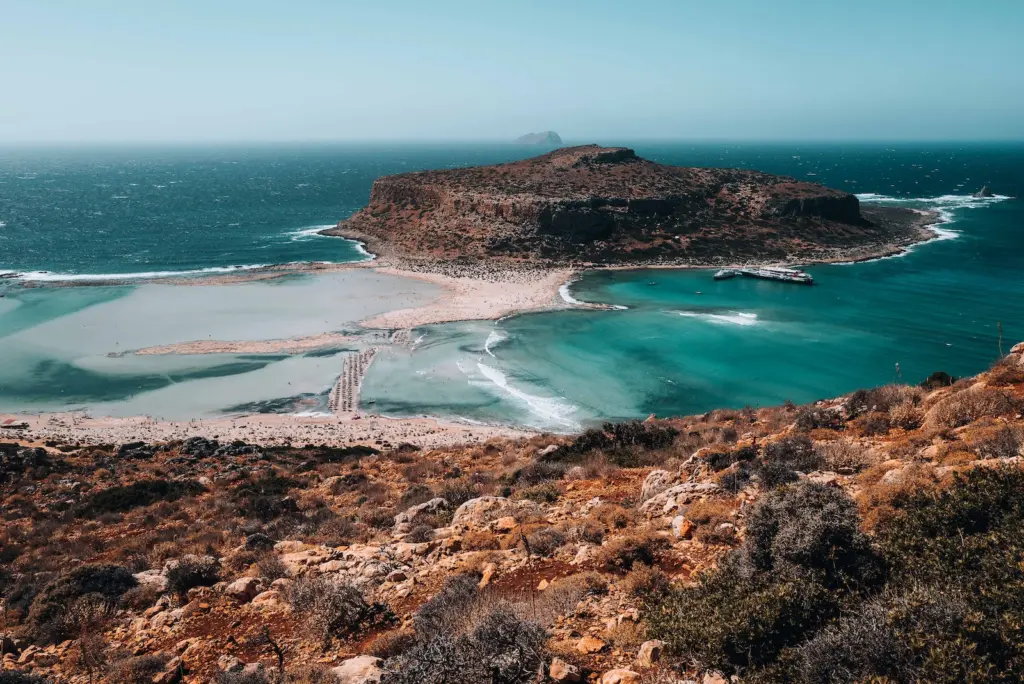
Spend a day at Balos Lagoon
I personally find chilling at the beach equally as important as sightseeing when on holiday. A rest day keeps the pain away I’d say, and what better place to spend a rest day than a gorgeous beach? Balos Lagoon, also knowns as Balos Beach, Balos Bay or Balus Lagune, is located in the northwest of Crete.
Snap the perfect Instagram shot in the turquoise waters, play some volleyball in the fine white sand, and spot some fish whilst snorkelling. Overall the water is rather shallow, making it the perfect destination for families, but there are some deeper bits beyond the rocks.
There are sun beds, parasols, and a couple of canteens.
Getting there
There are multiple ways of getting the. You can get there by car (you will need to pay €1,- entrance fee) but keep in mind that it is a dirt road leading up to Balos Lagoon and you’ll still have to walk 1 kilometre from the parking lot. Especially the way back is seen as rather strenuous because of the incline.
You can also take a ferry from Kissamos which costs about 25 to 30 euros. If you’re lucky you might see some dolphins along the way!
Finally, you can opt to book an excursion Here are some of my favourites:
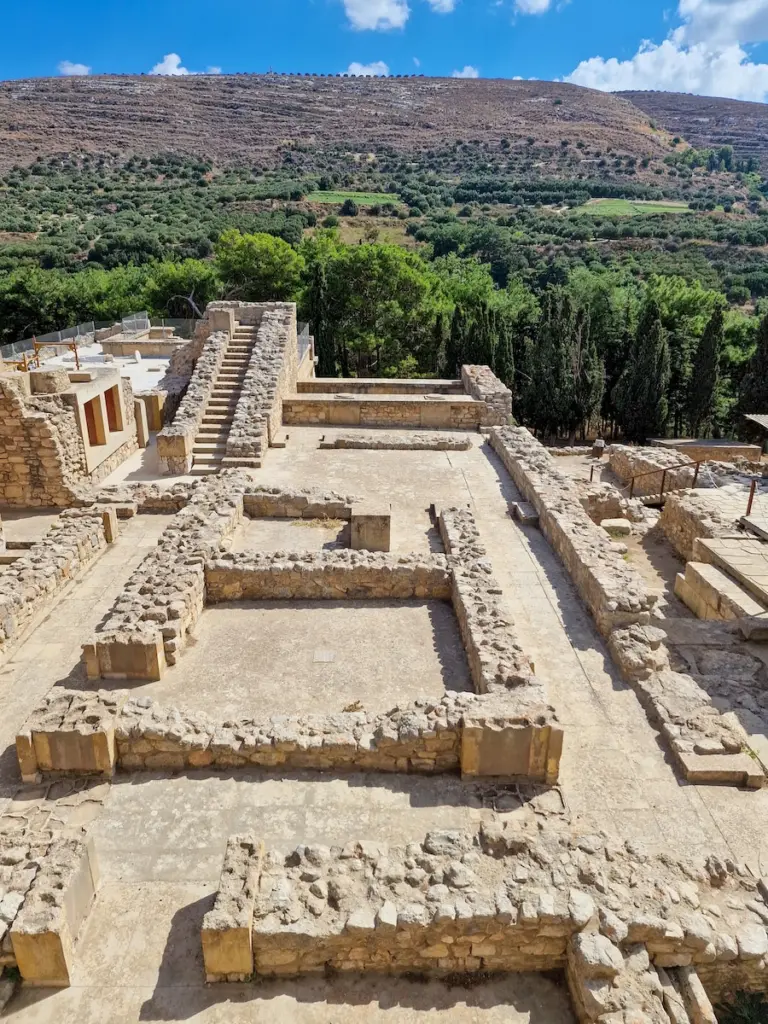
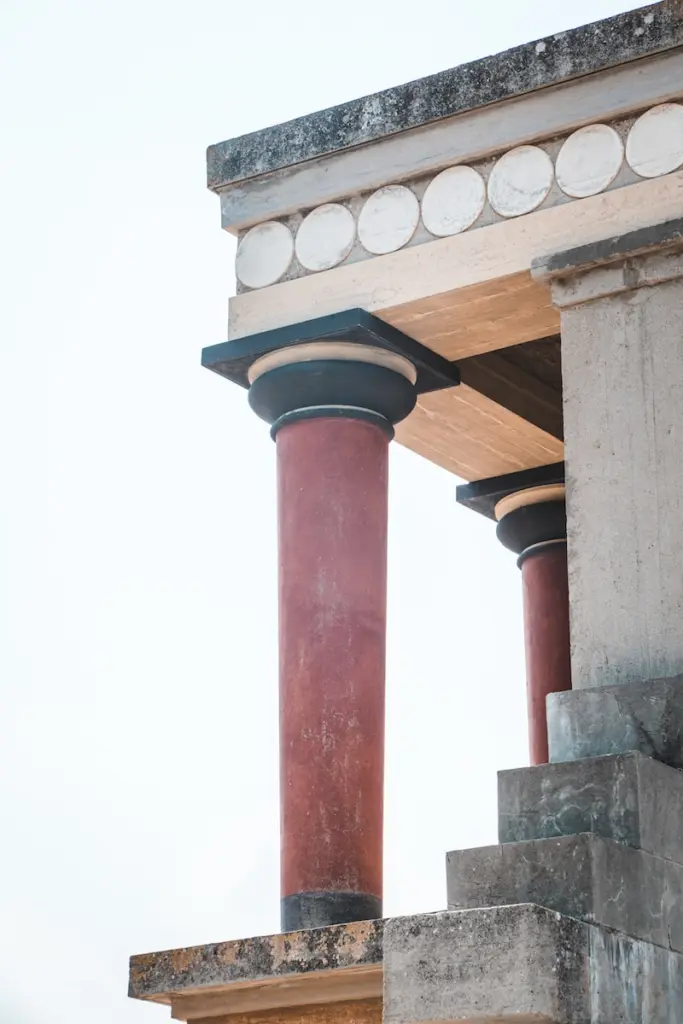
Explore Minoan history at Knossos
5 km south of Heraklion lies Knossos palace, home of King Minos who presumably kept the Minotaur in the labyrinth in the castle. The ruins are incredibly well-preserved which makes Knossos a must-visit during a trip to Crete. Visitors can explore the ruins and learn about the Minoan period. The archaeological site covers approximately 20000 to 22000 square meters. It takes about 30 to 90 minutes to explore the site. It’s best to explore with a guide although you can also wander around on your own or book an audio tour. Tickets start at €16.50 (with an audio tour).
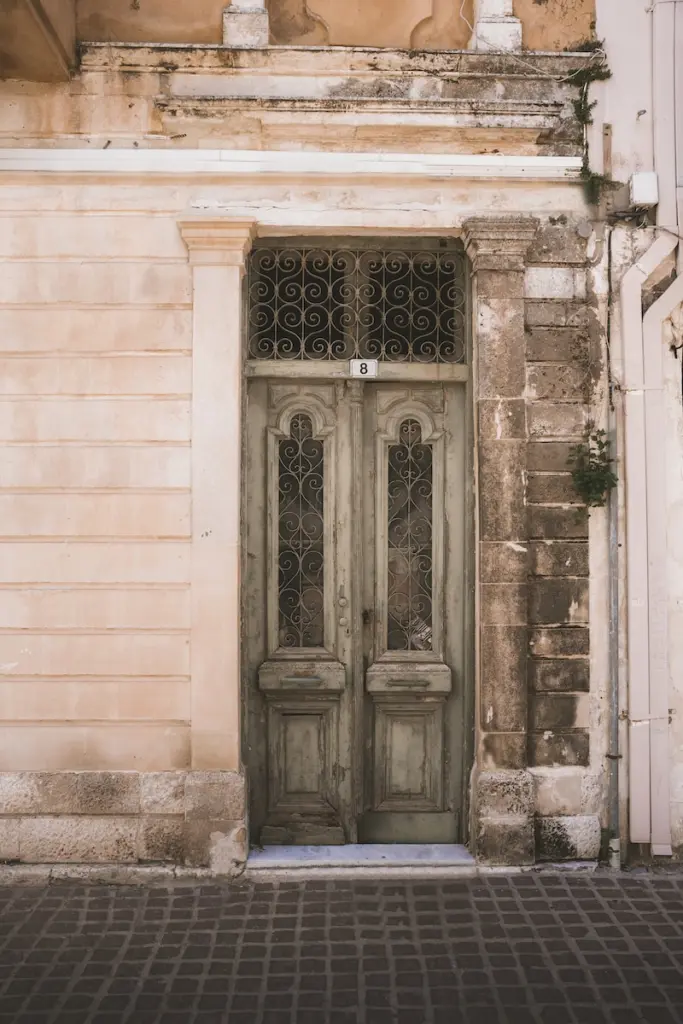
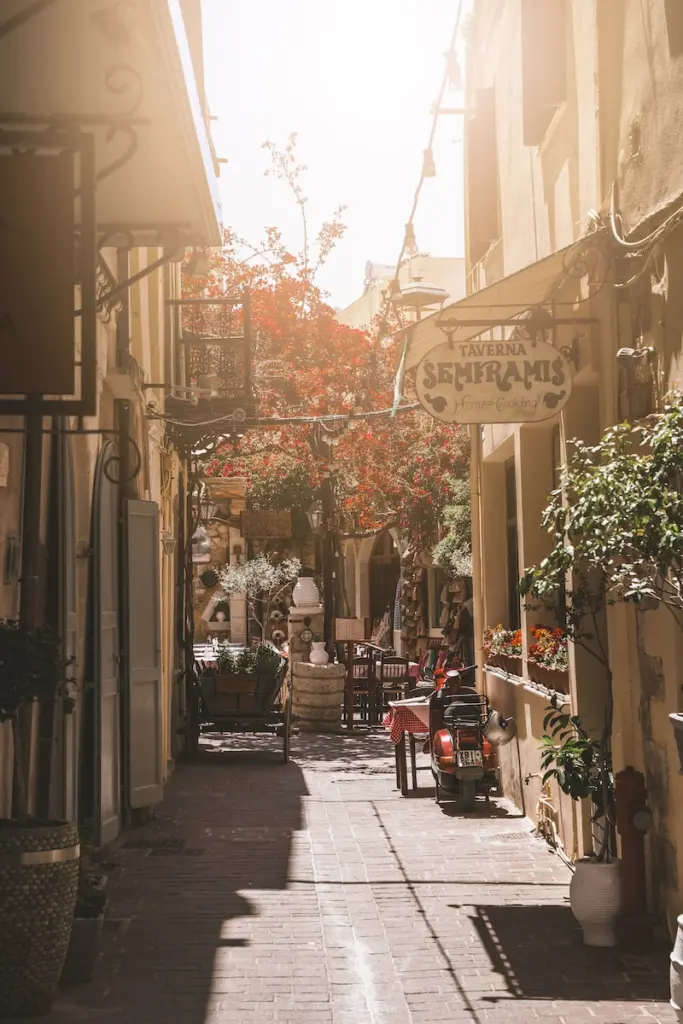
Roam around Rethymno Old Town
Rethymno is the capital city of the Rethymno region and Crete’s 3rd largest city. The city was built during the Minoan period but also has Venetian and Ottoman influences. Take the Venetian harbour for example, but what stands out most is the Old Town. The Old Town is the heart of the city. Winding streets take you past honey-coloured stone buildings with souvenirs and handicraft shops. From jewellery and pottery to natural products and local food. The Old Town has got it all!
Further sights to see in Rethymno are Arkadi Monastery, Neratze Mosque, Fortezza of Rethymno, and end your day at the beach.
Spend the day at Falassarna Beach
For the ultimate relaxation, you should head to Falassarna Beach! Falassarna Beach is one of Crete’s prettiest beaches with a long sandy beach (1km long and 150m wide) and stunning blue waters. The exotic beach often gets compared to Elafonissi Beach because it too has spots of pink (depending on various circumstances). The beach is located in the west of the island. There are plenty of tavernas for drinks and snacks, sun beds, parasols and multiple water activities that will guarantee you a fun day! Stay for a gorgeous sunset and perhaps even attend one of the several beach parties during summer.
It is a popular beach so keep in mind that it can get rather busy. There are two free parking lots in the area.
Have a fun day at a waterpark
Crete has got multiple waterparks but there are two that stand out to me: Watercity and Acqua Plus Water Park. Watercity is located in Anopolis, near Heraklion. The park has countless of water activities such as 14 water slides, a wave pool, a lazy river, and even a Tarzan sling! Entrance is €25,08 (online discount, book your tickets online!) for adults and €16,58 for children.
Acqua Plus Water Park is located in Chersonissos and has plenty to offer! The park has 19 slides, especially the Black Hole and the Crazy River stuck with me. These slides are wild one is completely in the dark and the other actually has employees stationed halfway through to help you. I had a lot of fun in this park. Furthermore, there is a lazy river, a fish spa, and there are photographers walking around the park to get your on-ride photos. Entrance is €24.90 for adults and €16.60 for children. It is possible to book a transfer with your tickets as well. You can do this at the Acqua Plus website.
Both parks have an interesting cashless system. You get a wristband which is used to pay in the park so you can leave all your valuables safe and sound in a locker. Upon handing in the wristband you pay for the costs you have made. Rather convenient, isn’t it?
Seek adventure at Portela Gorge
The Portela Gorge is one of Crete’s wildest gorges, located in the south. The gorge is only accessible through the water so to experience it you’ll need to book a canyoning tour. This tour is truly the adventure of a lifetime. Rappel down the cliffs, jump from great heights, go down natural slides and basically get completely soaked. You can book a canyoning tour at CanyoningCrete.com or at Manawa.com (not sponsored).
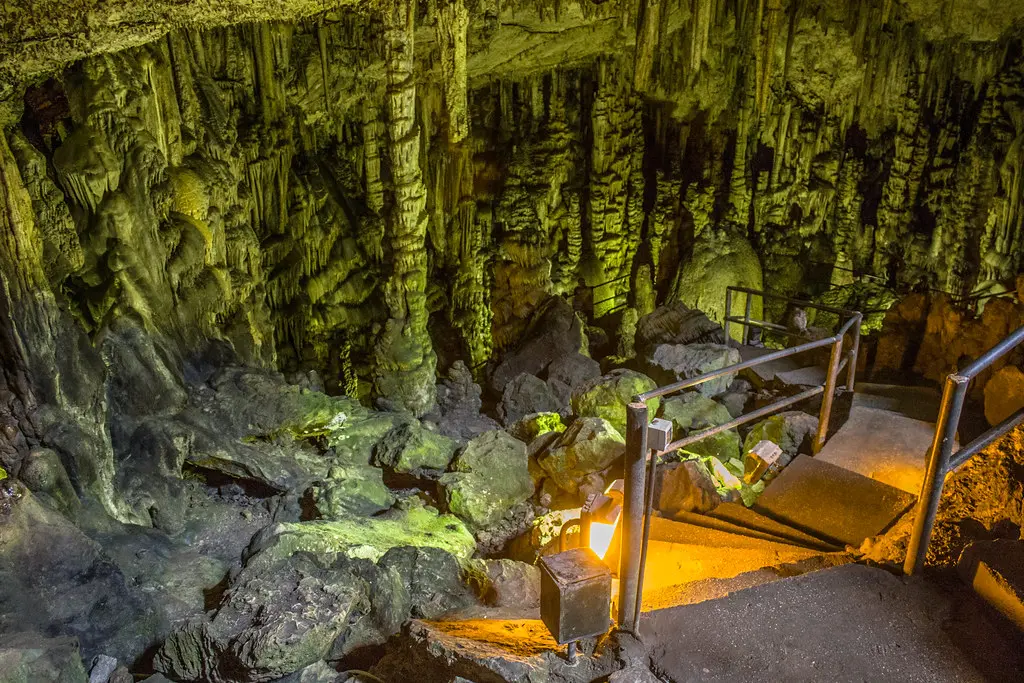
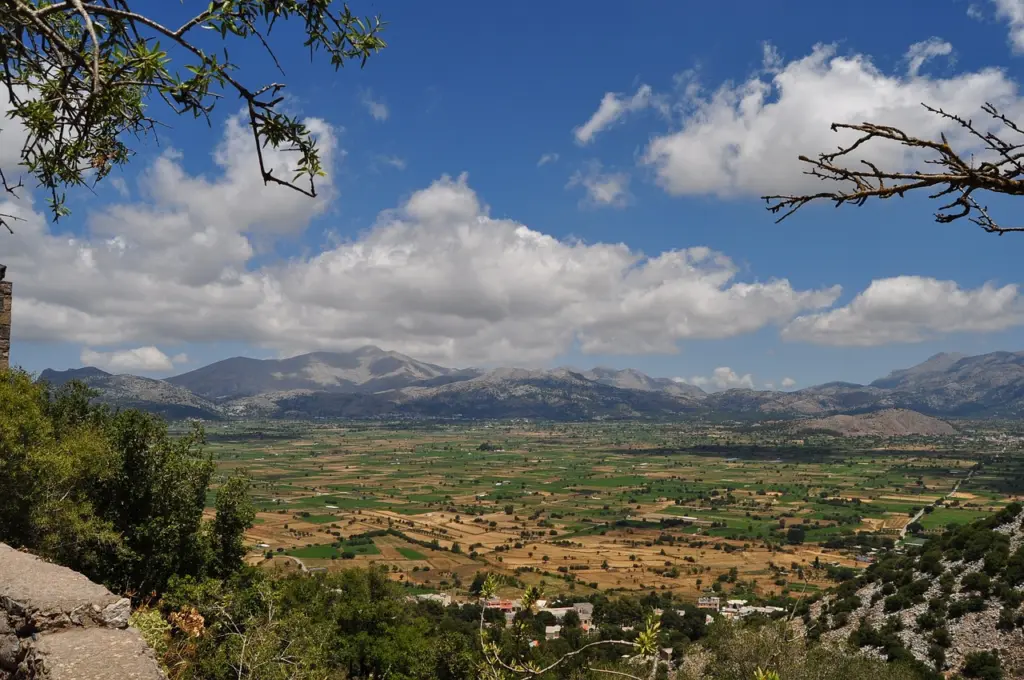
Explore the Lasithi Plateau
The Lasithi Plateau is a popular day trip located in the east of Crete. The 25 square metres plateau is surrounded by mountains and is mostly known for its traditional windmills, although the number of windmills has gone down over the past years. Fortunately, that is not all there is to see. You can visit one of the many traditional villages such as Tzermiado or Agios Giorgos. Enjoy a refreshing drink at one of the tavernas or traditional cafes before heading to the next sight.
A visit to the Lasithi Plateau is not complete without a visit to Dikteon Cave (also knowns as Psychro Cave or the Cave of Zeus. During excavations of the cave, they stumbled upon ritual objects which led archaeologists to believe that the cave was a sacred site. Legends say that Zeus was born in this cave. The cave is not very big, but there are beautiful stalactites and stalagmites to admire. Entrance is €6 and it’s open daily in summer. If you’re lucky you might spot a bat!
The path leading towards the cave is a bit strenuous and the cave itself consists out of many staircases, so keep that in mind when visiting the cave.
You can also visit Crete’s largest water supply project; the Aposelemis Dam. This dam caters to over 300,000 people in Heraklion, Hersonissos, Agios Nikolaos and the rural communities in the area. The building of the dam resulted in quite a commotion as the village of Sfendili got submerged. Nowadays part of the village lies underwater, hence why it is also called the Atlantis of Crete, and its mysterious exhibition draws in many tourists.
Furthermore, there are various walking routes, some leading up to gorgeous viewpoints of the Lasithi Plateau. So in short, there is plenty to do!
Best is to rent a car to drive around yourself or book a tour to the Lasithi Plateau. Here are some of my favourites:
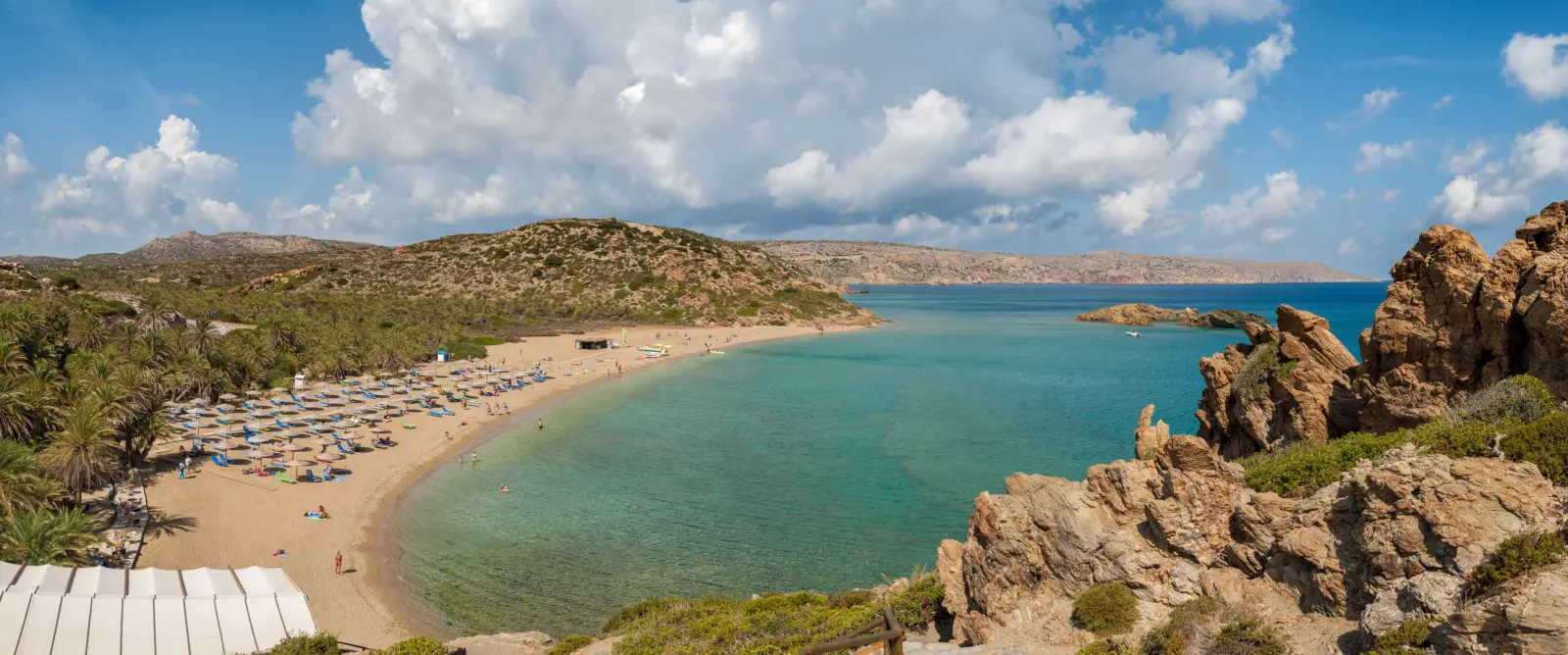
Spend the day at Vai Beach
Palm trees sway in the breeze, the sound of the clear blue water hitting the shore, golden sand between your toes, can you picture yourself sitting at this tropical beach with a book in one hand and a cocktail in the other? Vai Beach is an incredible beach in the east of Crete. There is a restaurant, cafe and snack bar, you can rent a sun bed and parasols, and parking only costs €2.50. Unfortunately, this beach is very popular amongst tourists, but once you see it you’ll understand why.
Tip: either arrive early (9:00) or arrive after 16:00 to be sure of a parking spot. Once the first tourists start to head home, ther emight be a chance you can rent sun beds and parasols for a reduced price!
These were 14 things to see and do in Crete. I hope you liked them. What is your favourite thing to do on Crete? Let me know if I have forgotten anything!
Love,
Sharon
Subscribe to get notified of new posts!

